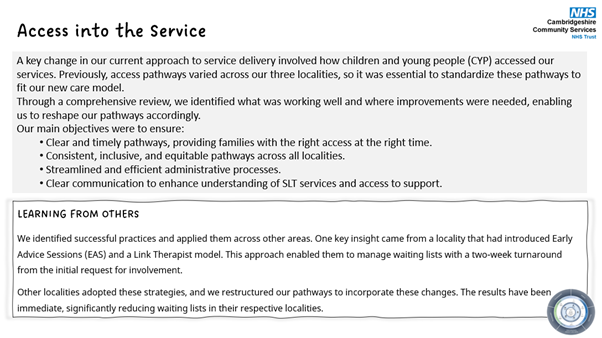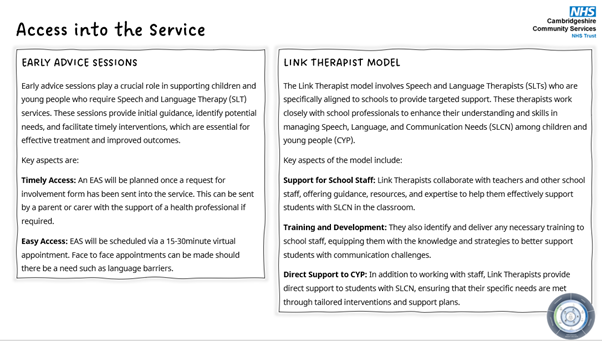Access Workstream
The Access Workstream has been established as a key priority area of focus. This workstream prioritises establishing efficient pathways for families to access support services, ensuring consistency and equity across different areas. It aims to streamline administrative processes and provide clear communication about Speech and Language Therapy services and support options.
Members: Lynne Millard-King, Amanda Armstrong, Rebecca Lant, Sarah Campbell and Lauren Mckeown-Tofts with support from the Improvement and Transformation Team


